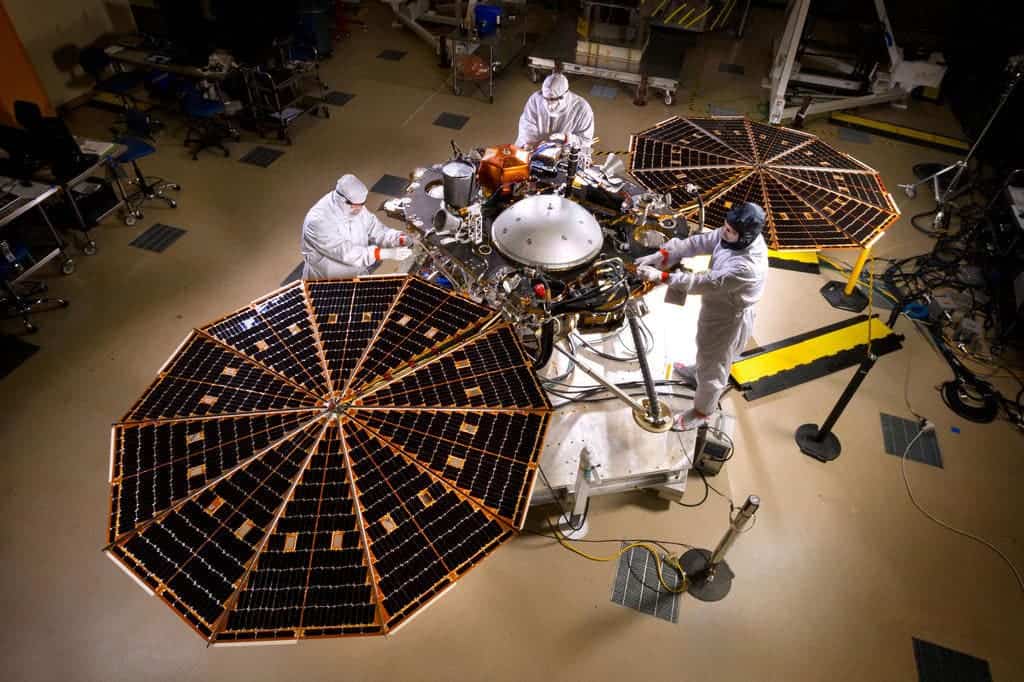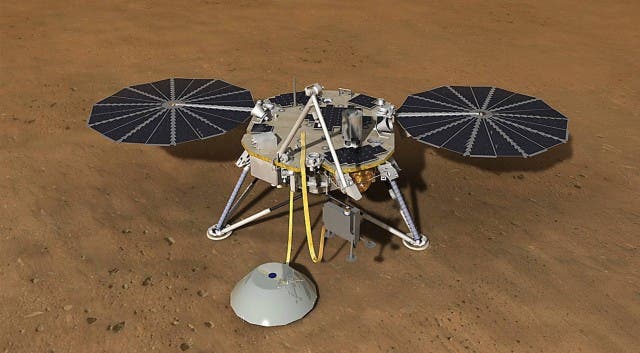NASA is gearing up for one of its most anticipated launches of the year. On Saturday, a one-of-a-kind Mars explorer called InSight is destined to launch for the Red Planet. Its mission: to study the slight rumbles and tremors produced as the planet wobbles. Just like ‘earthquakes’, these are ‘marsquakes’ — and whatever waves the lander’s instruments will pick up might help scientists gain unprecedented insights about Mars’ interior, from its crust to its very core.
“How we get from a ball of featureless rock into a planet that may or may not support life is a key question in planetary science,” said Bruce Banerdt, InSight principal investigator at NASA’s Jet Propulsion Laboratory in Pasadena, California. “We’d like to be able to understand what happened.”
Like earthquakes, marsquakes are vibrations of the ground. However, while an earthquake is produced by the movement of tectonic plates, scientists believe that marsquakes occur when the planet cools and contracts, causing the crust to ruck up slightly. Scientists believe that all planetary bodies experience quakes, ranging from those that vibrate fast to those that rumble low. In the 1970s, NASA’s Viking lander tried to measure quakes on Mars but its instruments weren’t sensitive enough. However, during the Apollo missions, seismometers measured thousands of tiny quakes on the moon.
The new lander, called InSight, was supposed to leave for Mars two years ago but at the last minute, mission engineers found that the lander’s most crucial instrument — the vacuum-encased seismometer — had a leak that let air through. The instrument is extremely sensitive and even the slightest bit of air can ruin its measurements. The seismometer has since been fixed and, now that our planet and Mars are aligned again, it will soon launch for its mission.

Technicians inspect InSight instruments. Credit: NASA.
Marsquakes could teach scientists a great deal about Mars’ interior, how it formed, and what kind of changes it has incurred throughout its geological history. When a quake travels through a material, its vibration changes. Therefore, the vibrations picked up by a seismometer can be decoded to reveal information about the various layers the quake has passed through. The lander is also carrying radio antennas that will help scientists estimate the size of Mars’ core. Another instrument, a nail-like device, is designed to insert itself into the ground in order to measure the planet’s internal temperature — the kind of information that can help scientists figure out what fueled Mars’ ancient volcanoes.
InSight scientists hope to record hundreds to thousands of small Martian quakes. Perhaps InSight will be able to answer some very important questions like why Earth is a habitable paradise and Mars is a cold and barren rock. So far, we’ve learned a lot about the Martian surface — now, it’s time to probe its deep interior.
Insight is set to launch on an Atlas V rocket, which will take off from Vandenberg Air Force Base in California on May 5th at 7:05 AM ET.









